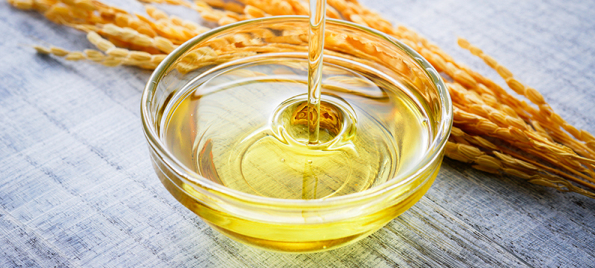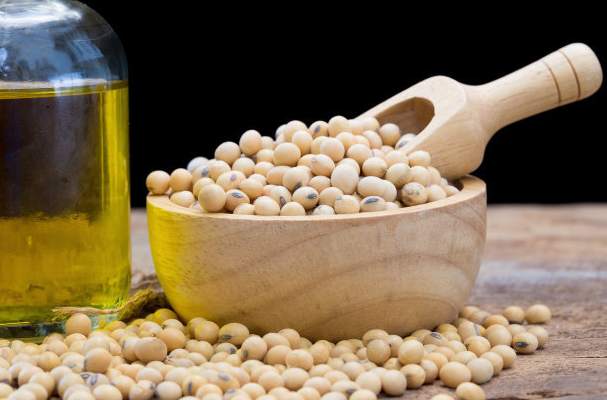Why does the acid value of rice bran, the raw material of rice bran oil, increase during storage? Why is broken oil prone to mildew? This is all because the oil seeds contain enzymes.
Enzyme is a protein with special functions and a unique biological catalyst. Biological cells need various enzymes with specific catalytic properties for biochemical reactions. Normal oilseeds contain a certain amount of various enzymes. During the process of seed maturation, storage, germination and production, the activity and trend of these enzymes have changed greatly. The distribution of enzymes in the grain is very uneven, mostly in the embryo and the outer part of the grain. At the later stage of the seed maturation process, the enzyme activity was significantly reduced.
Therefore, the enzyme activity in immature oil is much higher than that in mature oil. Among the oilseeds, the most important enzymes for oil production include lipase, lipoxygenase, phospholipase, and urease.
1. Lipase
Lipase can catalyze the hydrolysis and synthesis of fat, and its catalysis is reversible. When oil seeds are mature, they can catalyze the synthesis of fat; and when the seeds are mature, they can catalyze the decomposition of fat during the storage, processing and seed germination stages. Most lipases are relatively specific and can catalyze compounds with ester bonds. In addition to fat, it can also catalyze the hydrolysis of esters composed of different fatty acids and various alcohols.
2. Lipoxygenase
Lipoxygenase in oils can catalyze the formation of hydroperoxides from certain higher unsaturated fatty acids and their fatty acid esters. Hydroperoxides are very unstable, and the final products produced are low-molecular peroxides, such as aldehydes, ketones, and acids. Therefore, oils containing these enzymes will rapidly undergo oxidative rancidity under suitable conditions.
The activity of lipoxygenase is related to the types of oil seeds. For example, lipoxygenase is very active in soybean seeds, but less active in other seeds. When soybeans are broken, only a small amount of water is needed, and lipoxygenase can react with substrates such as linoleic acid and linolenic acid in soybeans to cause oxidative degradation. Nearly 100 kinds of oxidative degradation products have been identified by modern analysis methods, many of which are related to the beany taste of soybeans.
3. Phospholipase
Phospholipase can hydrolyze phospholipids. Phospholipase mainly includes phospholipase A1, phospholipase A2, phospholipase C, and phospholipase D. Phospholipase A1 can specifically catalyze the hydrolysis of the acyl group at the Sn-1 position of natural phospholipids, but the Sn-2 acyl group is easily transferred to the thermodynamically stable Sn-1 position. As a result, the product is the same as the product of phospholipase A2. Phospholipase A2 can specifically catalyze the hydrolysis of Sn-2 acyl groups of natural phospholipids to generate lysophospholipids and fatty acids. Phospholipase C produces diglycerides, phosphocholine, phosphoethanolamine, and phosphoinositol when it acts on phospholipids. Phospholipase D can not only hydrolyze the bond between phosphatidic acid and base to form an ester, but also catalyze the transacyl reaction in the presence of alcohol in a micro-aqueous system, so that a variety of molecules containing primary and secondary hydroxyl groups can interact with ethanolamine or bile on phospholipids. The base groups are exchanged to form new phospholipids.
4. Urease
Urease, or urease, belongs to the amidase class, which is mainly found in soybeans and other legume seeds. Urease can catalyze the hydrolysis of urea in the animal body, thereby liberating urea into ammonia and carbon dioxide. Part of the ammonia entering the blood will increase the blood ammonia concentration and cause the animal's body to be poisoned. The thermal stability of urease is relatively high, and certain conditions of heat treatment process are required to passivate and destroy it in the process of oil production. The level of urease content and its activity are one of the important quality indicators of soybean meal, and it is often used as an indicator to confirm the degree of soybean meal heat treatment. Urease is one of the anti-nutrients of soybeans.
5. Other enzymes
Protease, cellulase, etc. Some oils contain sulfatase and glycosidase. For example, the myrosinase found in rapeseed can decompose glucosinolates (glucosinolates) to form a series of toxic decomposition products.
The above wonderful content is the sharing of Enzymes in oil seeds by Henan Zhongxing Grain and Oil Machinery Co., Ltd. If you need oil pressing equipment, you can contact us at any time.

